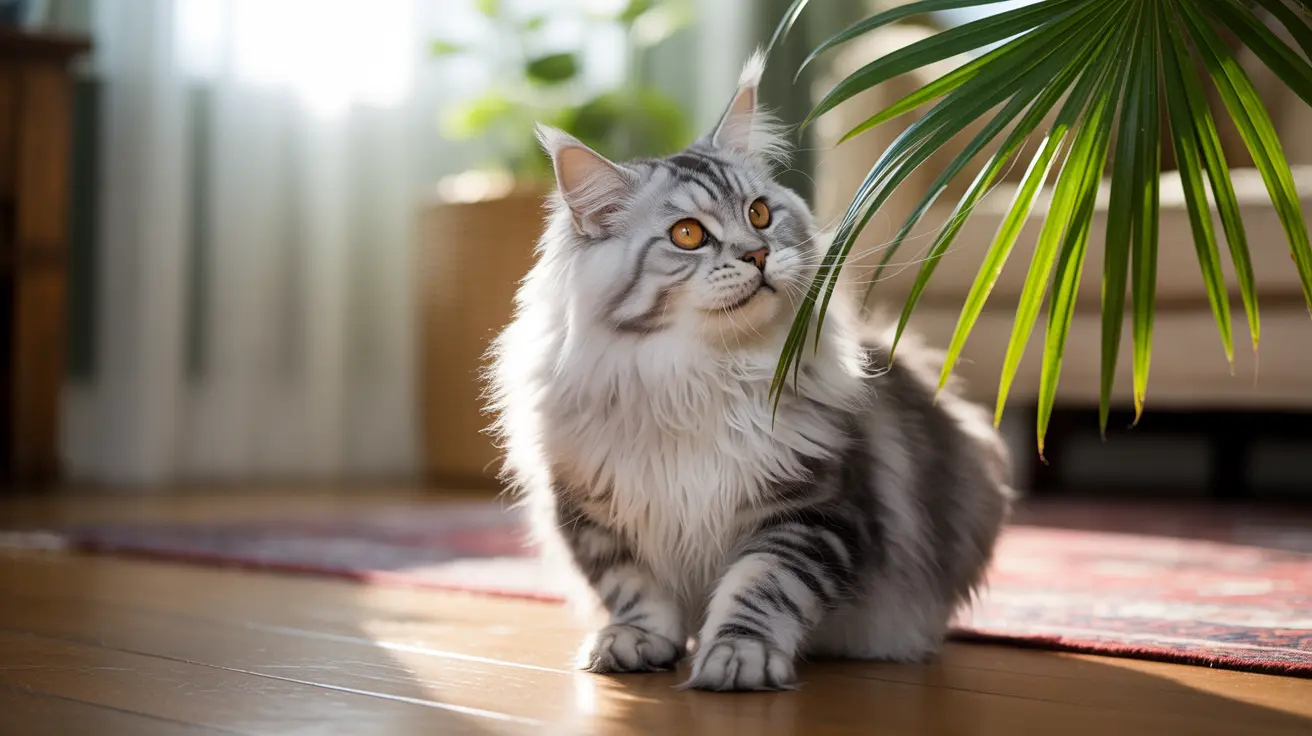For cat owners who love decorating with indoor plants, understanding whether palm leaves are toxic to cats is crucial for maintaining a safe environment. While most true palm species are considered non-toxic to felines, some plants marketed as "palms" can be extremely dangerous to your cat's health.
This comprehensive guide will help you distinguish between safe and harmful palm varieties, recognize warning signs of poisoning, and make informed decisions about which palms to keep in your cat-friendly home.
Safe vs. Toxic Palm Species for Cats
True palms from the Arecaceae family are generally safe for cats. These include popular houseplants like:
- Parlor Palm (Chamaedorea elegans)
- Areca Palm (Dypsis lutescens)
- Cat Palm (Chamaedorea cataractarum)
- Majesty Palm (Ravenea rivularis)
- Bamboo Palm (Chamaedorea seifrizii)
However, several plants commonly marketed as "palms" are actually cycads and can be lethal to cats. The most notorious is the sago palm (Cycas revoluta), which contains dangerous toxins throughout the entire plant.
Understanding the Dangers of Toxic "Palms"
The sago palm and other cycads contain cycasin, a highly toxic compound that can cause severe liver damage in cats. Even small amounts can be fatal, with the seeds being particularly concentrated with toxins.
Warning Signs of Palm Poisoning
If your cat has ingested parts of a toxic palm, watch for these symptoms:
- Immediate signs (within hours):
- Vomiting
- Diarrhea
- Lethargy
- Drooling
- Severe symptoms (within days):
- Jaundice
- Seizures
- Black, tarry stools
- Bleeding problems
Emergency Response and Treatment
If you suspect your cat has eaten any part of a toxic palm:
- Don't wait for symptoms to appear
- Contact your veterinarian immediately
- Bring a sample of the plant for identification
- Be prepared for intensive treatment
Creating a Safe Plant Environment
To maintain a cat-friendly home with palms:
- Research thoroughly before purchasing any palm variety
- Keep documentation of your plant species
- Consider placing safe palms in hanging baskets
- Monitor your cat's behavior around plants
- Remove any toxic varieties immediately
Frequently Asked Questions
Are all palm leaves safe for cats, or are some types toxic?
Not all palm leaves are safe for cats. True palms from the Arecaceae family are generally non-toxic, but plants like the sago palm (which isn't a true palm) are extremely toxic to cats.
What makes sago palm leaves dangerous to cats, and what symptoms should I watch for?
Sago palms contain cycasin, a toxin that causes severe liver damage. Watch for vomiting, diarrhea, lethargy, and drooling initially, followed by more serious symptoms like jaundice and seizures.
How quickly do cats show signs of poisoning after chewing on sago palm leaves?
Symptoms can appear as quickly as 15 minutes to several hours after ingestion, with severe liver damage developing within 2-3 days.
What should I do if my cat ingests part of a sago palm plant?
Seek emergency veterinary care immediately, even if your cat isn't showing symptoms. Bring a sample of the plant for identification if possible.
Which palm plants are safe to keep around cats as houseplants?
Safe options include Parlor Palm, Areca Palm, Cat Palm, Majesty Palm, and Bamboo Palm. These true palms from the Arecaceae family are non-toxic to cats.
Remember, while most true palms are safe for cats, it's essential to verify any new plant's species before bringing it into your home. When in doubt, consult with your veterinarian or a plant expert to ensure your feline friend's safety.






